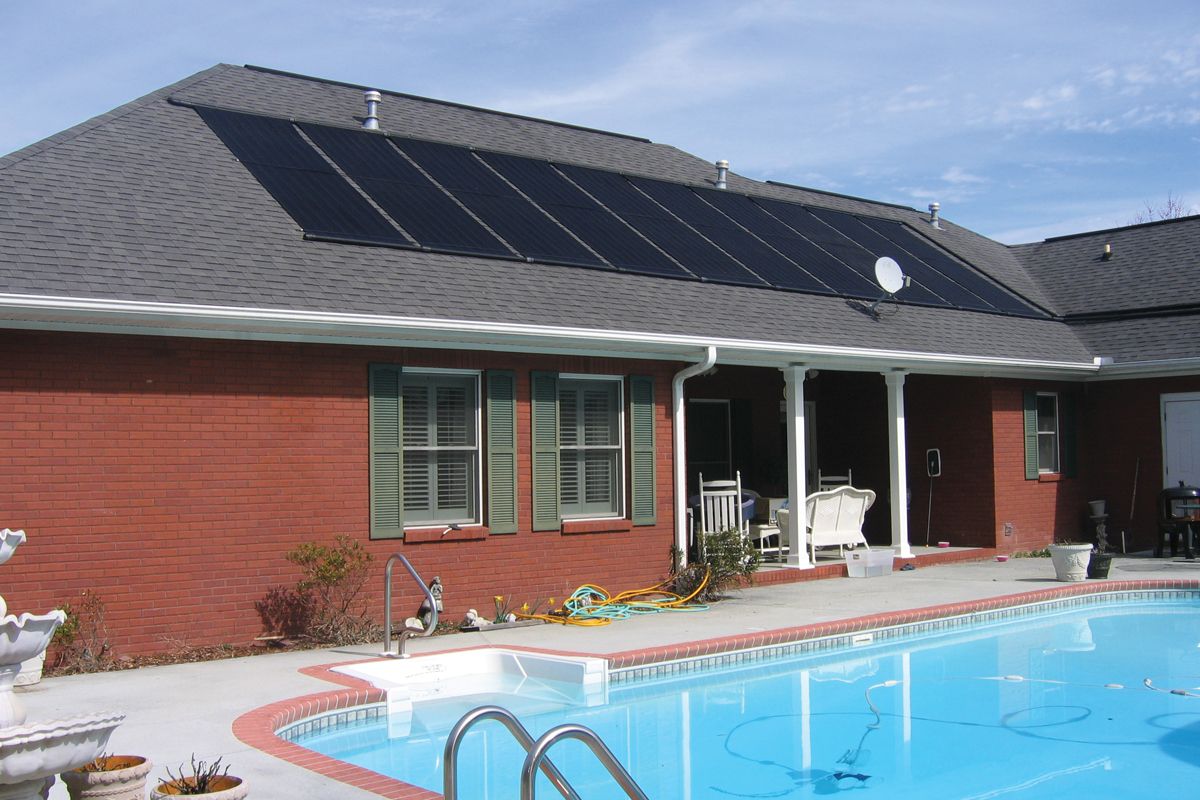The Solar Solution
Turning California’s Title 24 challenges into opportunities

In September last year, the California Energy Commission adopted a set of revised standards aimed at reducing energy consumption and carbon pollution from buildings. According to Title 24 of the new regulations, which take effect Jan. 1, 2026, gas will no longer be allowed as the primary heat source for new swimming pools and spas.
“In other words, if a pool owner wants a gas heater, it must be installed downstream from a solar or heat pump pool heater,” says Dan Sizelove, vice president of sales and marketing for Aquatherm Industries in Lakewood, New Jersey. “There are other pathways to compliance, but solar and heat pumps are the most straightforward and accessible, especially in the residential sector.”
Whether there is an outright ban or not in the future, Sizelove believes there will be an increase in consumer awareness, driving rising demand for alternative options like solar.
“Pool builders need to be prepared to present their customers with a solar option,” Sizelove says. “Now’s the time to talk with manufacturers, attend training seminars, evaluate products and make connections with a reputable installation company.”
Sizelove says the future of natural gas in California is uncertain, and with several efforts to eliminate natural gas use altogether through bans or building codes, he thinks Californians can expect to see the price of gas increase as part of the push toward electrification.
Aquatherm is the largest manufacturer of solar thermal swimming pool heaters in the U.S., with a global network of dealers and distributors. The company is a member of the California Solar & Storage Association, one of the collaborators on Title 24. While the company supports efforts to reduce gas consumption through more energy-efficient methods of pool heating, Sizelove says Aquatherm does not support an outright ban.
“We would support measures to increase minimum efficiency standards for gas heaters, or even a cap on the size of the gas heater based on a reasonable heat-up time for spas,” he says.
Sizelove says gas heaters are popular because they can intermittently heat a pool or spa quickly, but he does believe convenience comes at a cost.
“Solar thermal and electric heat pump pool heaters are ideal for maintaining a large volume of water at a higher baseline temperature,” says Sizelove. “The key difference being that, once solar is installed, there are no ongoing operation costs aside from running the filter pump.”
Swimming pool heating costs can be significantly reduced by installing a solar pool heater, according to the U.S. Department of Energy. Solar pool heaters are cost-competitive with both gas and heat pump pool heaters and have low annual operating costs.
Sizelove says California pool owners have been heating with solar since the 1970s, and it’s a proven technology throughout the state.
Heating a swimming pool is the most cost-effective use of solar energy. By preheating a pool or spa with solar, natural gas pool heater runtime is reduced or even eliminated — saving energy and reducing emissions.
Dan Sizelove, Aquatherm Industries
“Heating a swimming pool is the most cost-effective use of solar energy,” Sizelove says. “By preheating a pool or spa with solar, natural gas pool heater runtime is reduced or even eliminated — saving energy and reducing emissions.”
California regulations aside, a 2023 market research report by the Pool & Hot Tub Alliance shows solar pool heating is one of the most requested pieces of equipment for pool remodels. The report also shows no decrease in interest in solar heating panels or UV sanitation systems over the two-year period of the report.
Sizelove says one area of growth for Aquatherm has been in renovations, and he hopes more people will learn about tax exemptions and incentive programs for solar energy equipment.
While incentives vary by location and are subject to change, 36 states offer property tax exemptions, and 25 states offer sales tax exemptions for solar energy, according to the Solar Energy Industries Association.
Ed Murray, president of the California Solar & Storage Association, says, historically, interest in solar pool heating from builders has been more of a knee-jerk reaction to new regulations, but Murray says they’re doing what they can to keep pool pros informed through efforts with organizations like the Pool & Hot Tub Alliance to provide training and education.
“We’ll go to [PHTA] meetings and explain what’s going on with new regulations,” Murray says. “We’re trying to prepare them.”
Murray wants builders to see the value in solar pool heating — not just as a way to meet regulation requirements but also as a profitable opportunity for their businesses.
He notes that builders are typically concerned about the initial expense and don’t immediately see the long-term benefits, but Murray hopes builders will include solar in their original system package, recognizing it as a profitable addition rather than an extra cost.
Murray says builders can earn an additional 30% margin by selling solar pool heating systems directly to customers, instead of allowing a separate company to come in later and make that profit.
Solar pool heating systems typically require less ongoing maintenance, offering a low-touch option for homeowners while complementing other heating solutions like electric heaters or heat pumps.
“Solar is install it and forget it,” Murray says.
The California Solar & Storage Association collaborated with state officials, manufacturers and other industry groups to develop the Title 24 regulations for pool heating, and Murray says the process speaks to the power of working together and communicating.
“There’s a good lesson in how the industry can come together as a whole to make regulations happen,” Murray says. “It was nice to see that people can work together in this day and age. We were able to put all of this together.”






